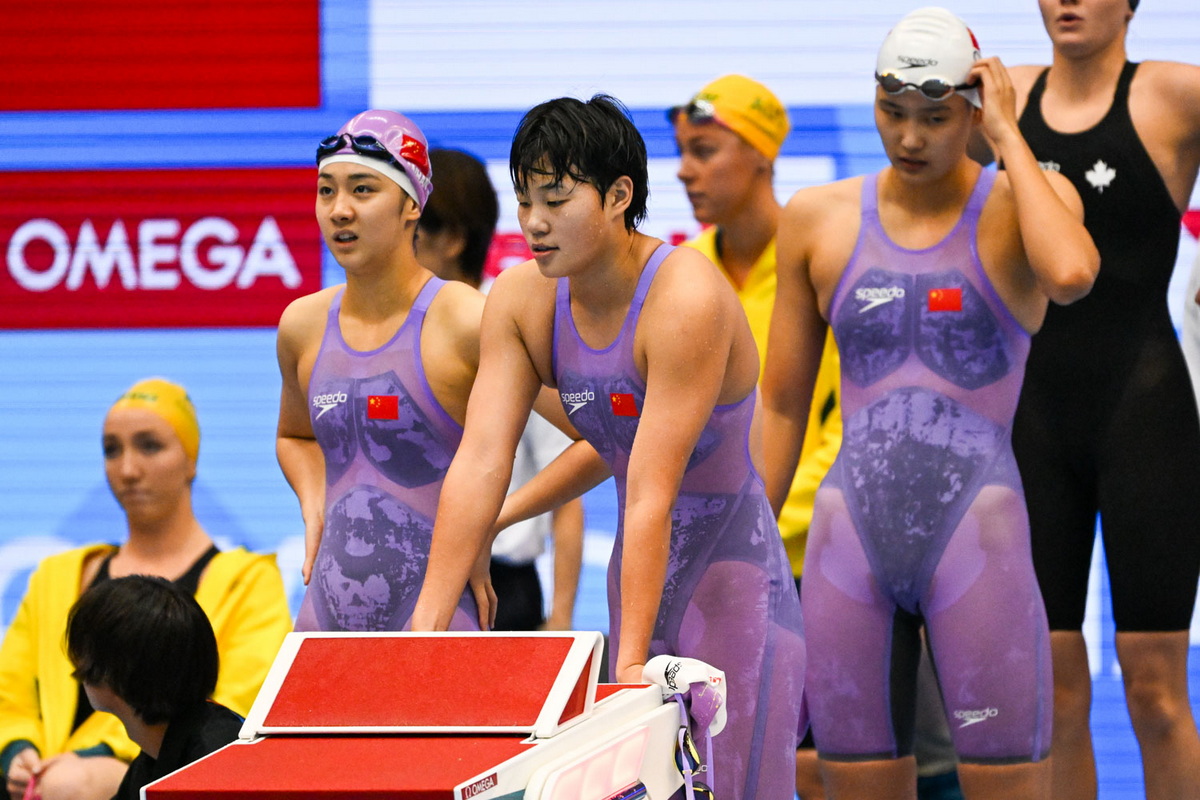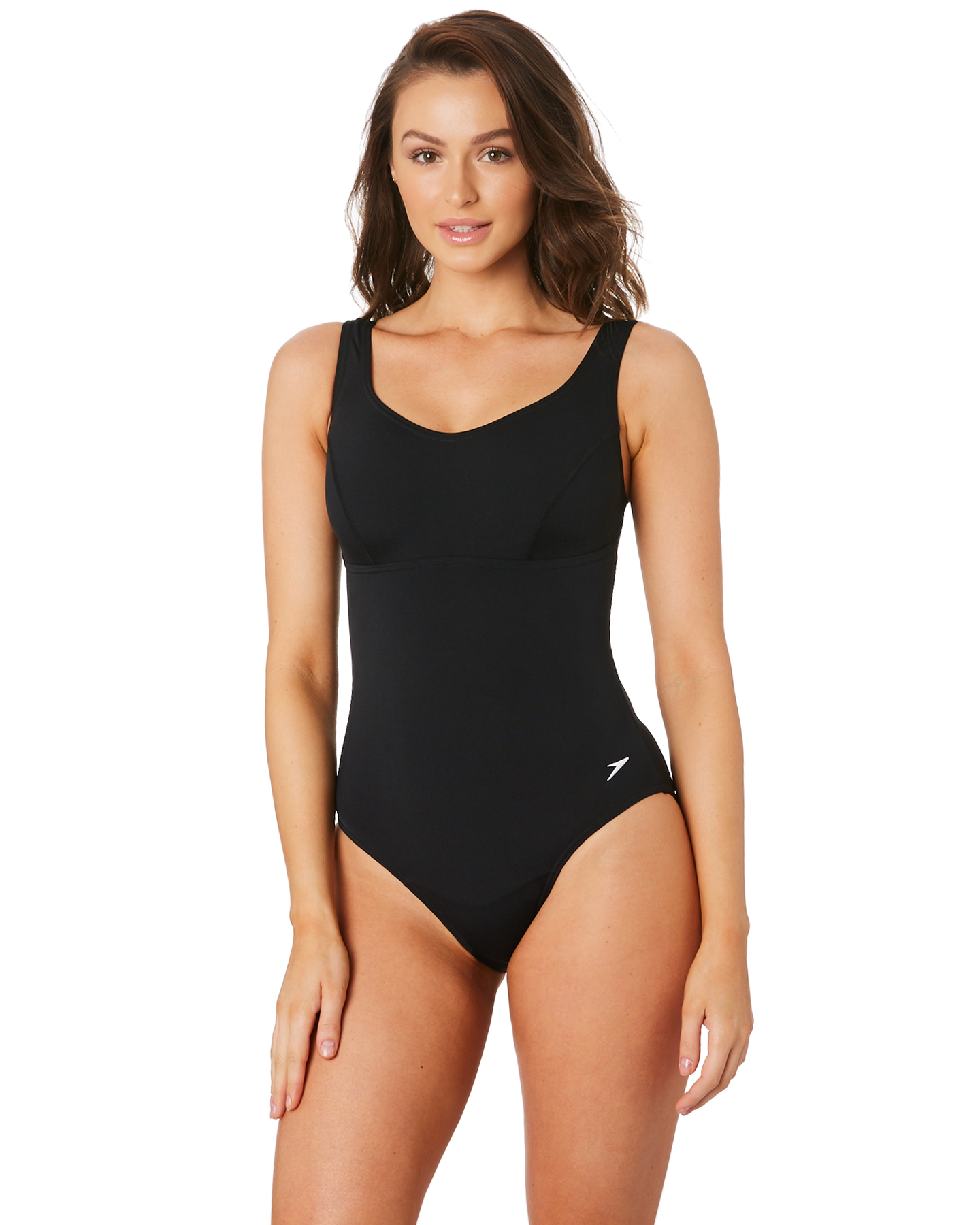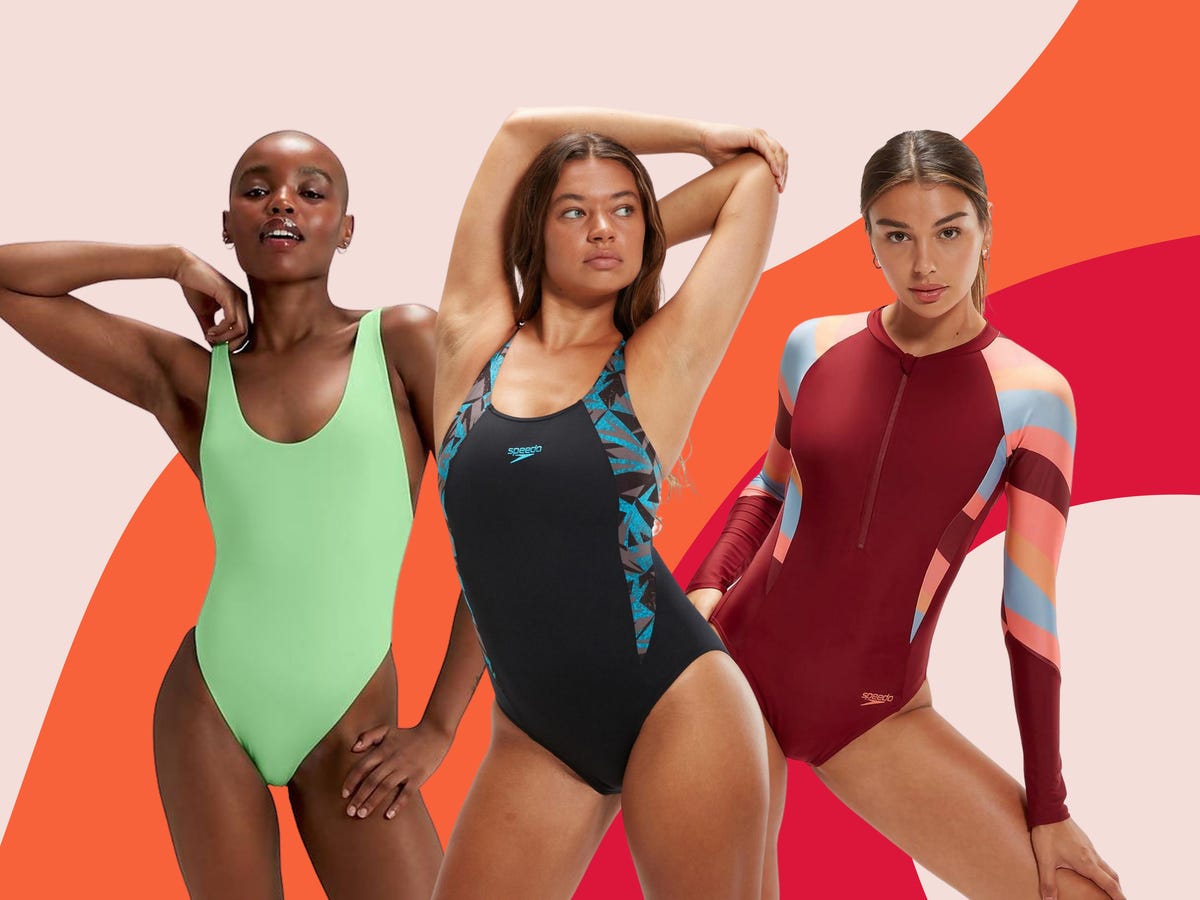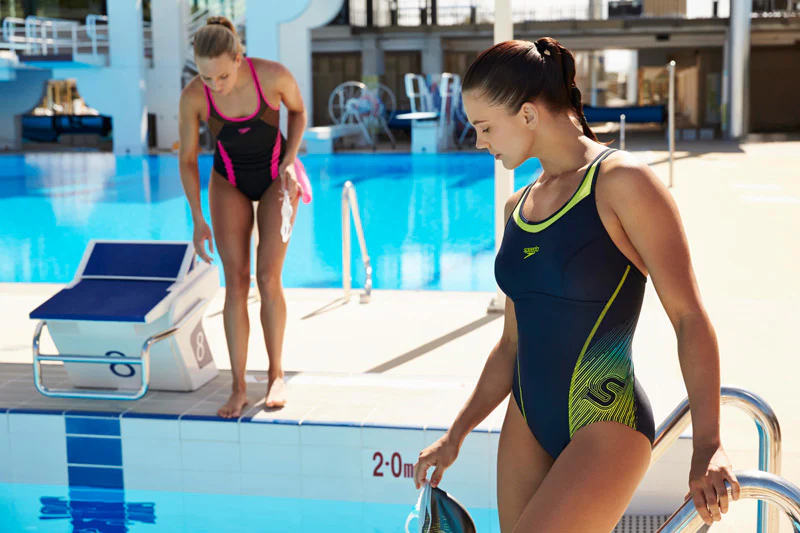Content Menu
● Understanding Swimwear Categories
● Regulations Governing Category 1 Swimwear
● Importance of Category 1 Swimwear
● Materials Used in Category 1 Swimwear
● Design Features of Category 1 Swimwear
● Visual Examples of Category 1 Swimwear
● Training with Category 1 Swimwear
● Common Misconceptions about Category 1 Swimwear
● The Evolution of Competitive Swimwear
>> Historical Overview
● Future Trends in Swimwear Technology
● Frequently Asked Questions (FAQs)
>> 1. What is the difference between Category I and II swimwear?
>> 2. Can I wear a two-piece swimsuit in competitions?
>> 3. What materials are prohibited in Category I swimsuits?
>> 4. Are there any exceptions to these rules?
>> 5. How can I ensure my swimsuit meets these standards?
>> 6. What should I consider when choosing a swimsuit for competition?
>> 7. Can I modify my swimsuit for better performance?
>> 8. How often should I replace my competitive swimsuit?
>> 9. Do professional swimmers have sponsors for their swim gear?
>> 10. Is there a difference between men's and women's competitive swimwear?
● Conclusion
● Citations:
Swimwear is an essential aspect of aquatic activities, whether for competition, leisure, or safety. Among the various classifications of swimwear, Category 1 Swimwear holds a significant place, especially in competitive swimming and open water events. This article will delve into the specifics of Category 1 Swimwear, its regulations, materials, design features, and its importance in swimming competitions.

Understanding Swimwear Categories
Swimwear is categorized based on its design, material, and intended use. The primary categories are:
- Category I Swimwear: Designed for competitive swimming, adhering strictly to regulations regarding coverage and materials.
- Category II Swimwear: Includes wetsuits and other swimwear that do not meet the stringent requirements of Category I.
- Category III Swimwear: Generally refers to recreational swimwear that is not designed for competitive use.
Understanding these categories is crucial for athletes who wish to compete at higher levels and need to ensure their gear meets the necessary standards.
Regulations Governing Category 1 Swimwear
The regulations for Category 1 Swimwear are set by organizations like the United States Masters Swimming (USMS) and FINA (Fédération Internationale de Natation). Here are the key rules:
1. Material: The swimsuit must be made from textile materials. Common fabrics include nylon, polyester, and spandex blends.
2. Design Restrictions:
- Swimsuits can be one or two pieces.
- No zippers or clasps are allowed.
- The suit must not cover the neck or extend past the shoulders or ankles.
3. Performance Enhancements:
- Any device or substance that aids in speed, buoyancy, or navigation is prohibited.
- This includes wetsuits, pull buoys, paddles, fins, and snorkels.
4. Coverage: For men, the swimsuit must not extend above the navel or below the knee; for women, it must cover from the shoulder to the knee but not below.
These regulations are designed to maintain a level playing field among competitors by ensuring that no swimmer has an unfair advantage due to their swimwear.

Importance of Category 1 Swimwear
The significance of Category 1 Swimwear lies in its role in ensuring fair competition among swimmers. By standardizing swimwear requirements:
- Equity: All competitors have equal conditions regarding their swimwear's performance capabilities.
- Safety: The regulations help prevent accidents caused by inappropriate swimwear during races.
- Performance Measurement: Ensuring that swimsuits do not provide artificial advantages allows for a more accurate assessment of a swimmer's skills and training.
Moreover, adherence to these standards fosters integrity in the sport. Athletes can focus on honing their skills rather than worrying about gear-related disputes.
Materials Used in Category 1 Swimwear
The choice of material is crucial for both comfort and performance in competitive swimming. Common materials include:
- Nylon: Known for its durability and resistance to wear and tear.
- Polyester: Offers excellent chlorine resistance and retains color well over time.
- Spandex/Lycra: Provides stretchability and a snug fit that enhances hydrodynamics.
These materials are often blended to create suits that balance comfort with performance. Additionally, advancements in fabric technology have led to innovations like moisture-wicking properties and UV protection, which enhance swimmers' experience both in and out of the water.
Design Features of Category 1 Swimwear
Swimwear design plays a crucial role in performance. Here are some common features found in Category 1 suits:
- Streamlined Fit: Designed to reduce drag in water. The tighter fit minimizes resistance while maximizing speed.
- Minimal Seams: Fewer seams mean less resistance against water flow. Advanced stitching techniques can create smooth transitions between panels.
- Hydrophobic Coating: Some suits feature coatings that repel water to minimize drag further. This technology helps swimmers achieve faster times by reducing water resistance during races.
- Color and Pattern Considerations: While aesthetics may seem secondary, certain colors can affect visibility during competitions. Swimmers often choose colors that stand out against pool backgrounds without violating any regulations.

Visual Examples of Category 1 Swimwear
To better understand what constitutes Category 1 Swimwear, here are some visual representations:
Example of Category 1 Swimwear
*Example of a competitive swimmer wearing a Category 1 suit*
Competitive Swimmer Wearing Category 1 Suit
*An athlete demonstrating proper fit and design features*
Training with Category 1 Swimwear
Training with appropriate swimwear is essential for competitive swimmers. It helps them get accustomed to the feel and performance characteristics of their competition suits. Here are some tips for training:
- Practice Starts and Turns: Use your competition suit during practice starts to get used to its fit and feel. This practice can significantly improve your confidence during actual races.
- Endurance Training: Regular training sessions will help swimmers adapt to the suit's restrictions while building endurance. Incorporating interval training can also help swimmers gauge how their suits perform under different conditions.
- Feedback from Coaches: Coaches can provide valuable insights into how well a swimmer's suit performs during training sessions. They can suggest adjustments based on observed performance metrics.
Common Misconceptions about Category 1 Swimwear
There are several misconceptions surrounding Category 1 Swimwear:
- Myth: All swimsuits labeled as "competitive" are Category I.
- Fact: Only those that meet specific regulations regarding material and design qualify as Category I. Many brands produce swimsuits marketed as "competitive" that do not comply with these standards.
- Myth: Wetsuits can be used in all competitions.
- Fact: Wetsuits typically fall under Category II and are only allowed under specific conditions—primarily in open water events where temperature regulation is necessary.

The Evolution of Competitive Swimwear
The evolution of swimwear technology has been remarkable over the years. From simple cotton suits used in the early 20th century to today's high-tech fabrics designed for optimal performance, swimwear has undergone significant changes:
Historical Overview
- Early 1900s: Swimmers wore heavy wool suits that absorbed water and created drag.
- 1950s–1960s: Introduction of synthetic fibers like nylon revolutionized swimwear by reducing weight and drying time.
- 2000s Boom: The introduction of full-body suits made from advanced materials led to record-breaking performances at events like the Olympics; however, this also sparked debates about fairness in competition leading to stricter regulations.
Future Trends in Swimwear Technology
As technology continues to advance, we can expect further innovations in swimwear design:
- Smart Fabrics: Future swimsuits may incorporate smart textiles that monitor performance metrics such as heart rate or muscle fatigue during swims.
- Sustainability Initiatives: With growing environmental concerns, manufacturers are exploring eco-friendly materials that maintain performance standards while reducing environmental impact.
Frequently Asked Questions (FAQs)
Here are some common questions regarding Category 1 Swimwear along with their answers:
1. What is the difference between Category I and II swimwear?
- Category I swimwear is strictly regulated for competitive use without any aids like zippers or buoyancy devices. In contrast, Category II includes wetsuits which may provide thermal protection but do not comply with strict competitive standards.
2. Can I wear a two-piece swimsuit in competitions?
- Yes, as long as it adheres to the design specifications of Category I swimwear (e.g., no zippers).
3. What materials are prohibited in Category I swimsuits?
- Any material that provides buoyancy or thermal insulation beyond what is allowed by textile standards is prohibited.
4. Are there any exceptions to these rules?
- Specific events may have different rules regarding swimwear; always check with event organizers before participating.
5. How can I ensure my swimsuit meets these standards?
- Purchase swimsuits from reputable brands that specify compliance with FINA or USMS regulations.
6. What should I consider when choosing a swimsuit for competition?
- Consider factors such as fit, comfort, material durability, compliance with regulations, and personal preferences regarding style and color.
7. Can I modify my swimsuit for better performance?
- Modifications that alter the fundamental design or material properties may lead to disqualification; always consult your coach or governing body before making changes.
8. How often should I replace my competitive swimsuit?
- Depending on usage frequency and care practices, it's advisable to replace competitive swimsuits every season or when you notice significant wear or loss of elasticity.
9. Do professional swimmers have sponsors for their swim gear?
- Many professional swimmers have sponsorship deals with brands that provide them with high-quality gear tailored to their needs at no cost or reduced prices.
10. Is there a difference between men's and women's competitive swimwear?
- Yes, while both categories must meet specific regulations regarding coverage and material, design elements differ significantly between men's jammers (tight-fitting shorts) and women's one-piece suits or two-piece options adhering to guidelines.
Conclusion
Category 1 Swimwear plays a vital role in competitive swimming by ensuring fairness and safety among participants. Understanding its regulations helps swimmers choose appropriate gear for training and competitions effectively. As you prepare for your next event, ensure your swimwear meets these guidelines to compete at your best!

Citations:
[1] https://www.comaswim.org/c/FE7EE8F/file/Foster%20Lake/2019_USMS_OW_Swimwear_Rule_Summary.pdf
[2] https://www.swimsuitsdirect.com/pages/swimsuit-glossary
[3] https://en.wikipedia.org/wiki/swimsuit?variant=zh-cn
[4] https://commons.wikimedia.org/wiki/Category:Swimwear
[5] https://www.nordstrom.com/browse/content/blog/types-of-swimsuits
[6] https://www.usms.org/-/media/usms/pdfs/volunteer%20central/rule%20book/part%201.pdf
[7] https://www.youtube.com/watch?v=DjsK_Q0YiRw
[8] https://en.wikipedia.org/wiki/Competitive_swimwear
[9] https://community.usms.org/swimming/f/open-water-training-and-technique/31864/open-water-category-1-swimsuit-rule
[10] https://www.openwaterswimming.com/marathon-swimming-swimwear-standards-a-comprehensive-guide-and-community-poll/
[11] https://sauvetage.qc.ca/en/lifeguarding/lifeguard-duty/accepted-swimwear-accordance-safety-and-hygiene






































